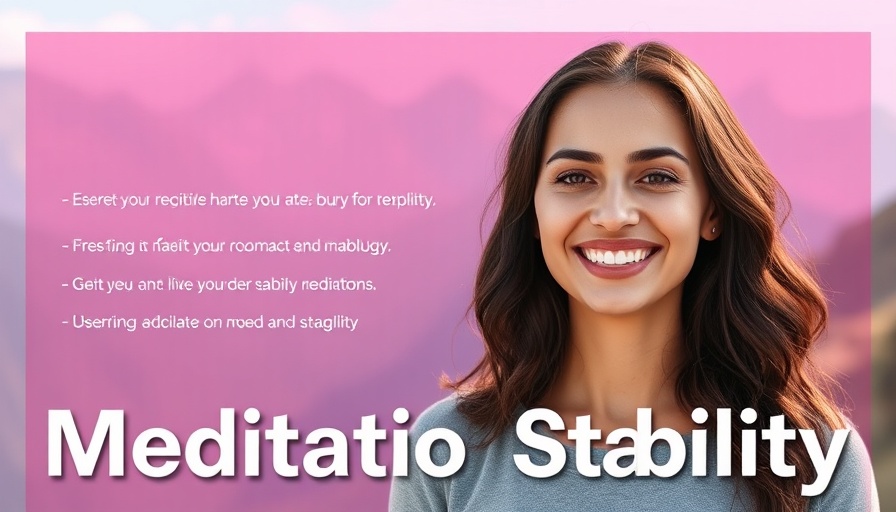
Finding Inner Peace in a Chaotic World
As we navigate through the relentless whirlwind of daily demands and societal expectations, finding solace becomes crucial. Change is the only constant, and amidst this uncertainty, we can often feel unmoored. However, through mindfulness practices like meditation, we can intentionally reconnect with our roots, embracing both our inner selves and the turmoil outside.
Embracing Impermanence: The Meditation Framework
Aden Van Noppen's "12-Minute Meditation to Find Stability Amid Change" acts as a beacon, guiding us to acknowledge the impermanence of our thoughts and emotions. This meditation invites us to center our awareness on the breath—an anchor that allows us to ground ourselves amidst life’s flux. The primary action is simple yet profound: observe the natural inhalation and exhalation without control. This observation mirrors the flow of life, where each moment unfolds uniquely, paralleling the waves of the ocean—some crashing, others gently lapping at the shore.
Rootedness: Finding Stability From Within
Grounding ourselves begins with an acute awareness of the body’s contact with the Earth. This practice fosters a sense of connection and security, reminiscent of a tree deeply embedded in the soil, moving silently with the wind yet unwavering in its presence. Visualizing our roots, we explore the metaphor of stability—recognizing that even amidst chaos, we can cultivate resilience from deep within.
Breath as a Symbol of Life: A Cycle of Soaking Up and Letting Go
The breath becomes a powerful representation of duality in life—both receiving and releasing. In the meditation, repeating phrases like “Soaking up” and “Letting go” reinforces this cycle, reminding us that just as we inhale new experiences and insights, we also must release what no longer serves our growth. This cyclical nature of breathing parallels our emotional spectrum; it teaches us to embrace every moment without attachment.
Transformative Insights: How Mindfulness Shapes Resilience
Engaging in the practice of meditation, especially in times of transition, equips us with valuable tools to facilitate emotional awareness. By fostering mindfulness, individuals can enhance their capacity for resilience. The method reminds professionals, executives, and families alike that while life may shift unpredictably, the relationship with our breath—and thus with ourselves—can remain steadfast. Each session builds upon the last, creating layers of calm amidst the storm.
The Role of Community in Mindfulness Practice
Communities that engage in collective mindfulness practices often report a sense of belonging. Sharing meditative experiences fosters deeper connections, offering support in the face of adversity. In health-conscious families, such practices can unify members, teaching them to face challenges collaboratively, promoting not only individual well-being but also collective harmony.
Real-World Application: Engaging with Change
Incorporating short meditative practices into daily routines can significantly enhance productivity and emotional health. Professionals finding themselves stretched thin can utilize moments of mindfulness during breaks, bringing clarity to their thoughts. Recognizing signs of stress, they can respond not just reactively, but proactively—with the breaths that encourage centeredness and focus.
Conclusion: Nurturing Our Mental Health in Times of Change
As we journey through life’s inevitable transitions, anchoring ourselves in mindful practices like meditation can illuminate paths to emotional stability and resilience. By finding our feet on the ground and breathing in deeply, we invite a sense of tranquility to ease the chaos around us. Whether through personal practice or shared experiences, embracing impermanence not only strengthens our well-being but also enriches our lives overall.
 Add Row
Add Row  Add
Add 




 Add Row
Add Row  Add
Add 

Write A Comment